Manaslu Trek

Trekking around Manaslu offers a unique opportunity to experience a reasonably untouched region of Nepal. This region of Nepal sees few trekkers, which makes a visit here more exclusive and unspoiled. Manaslu, open for trekking since 1991, provides spectacular beauty along the border of Nepal and Tibet and is now a controlled trekking route, allowing organized trekking groups special permits to gain entry into this region to venture round its spectacular circuit.
Manaslu has a unique environment, which is exceptionally rich in biodiversity that has made this region one of the finest tourist destinations of Nepal for many years. The majestic Himalayan ranges in this area consist of cultural diversities and natural scenery with high altitude romantic glacier lakes and fascinating flora and fauna, all features of this region, have made it one of the most well liked places of Nepal.
Day 1: Arrival in Kathmandu (1,334m) – 30 mins drive to Hotel
You land in Kathmandu, the vibrant capital of Nepal, where the Himalayan air and bustling streets instantly set the mood for adventure. After airport pickup, you head to your hotel for a warm welcome and a short rest. The afternoon is usually free, giving you time to relax or explore the local area. Kathmandu offers a colorful mix of culture, markets, and friendly people. In the evening, your trekking guide provides a short briefing about the Makalu Trek. Later, you can stroll through Thamel, enjoy dinner, and prepare for the days ahead. Your journey officially begins here.
Day 2: Kathmandu Sightseeing and Cultural Tour (1,334m) – 5–6 hrs
Today is dedicated to exploring Kathmandu’s rich heritage, which includes UNESCO World Heritage Sites. You visit iconic landmarks such as Swayambhunath, Pashupatinath, and Boudhanath. Each site reflects Nepal’s deep spiritual traditions and living culture. The guided tour helps you understand the religious importance and historic architecture. After sightseeing, you return to your hotel to finalize trek permits and preparations. The evening offers time to organize gear or enjoy a quiet dinner. This day helps you ease into Nepal’s rhythm before the mountains call.
Day 3: Drive from Kathmandu to Bandipur (1,030m) – 6–7 hrs drive
A scenic drive takes you from Kathmandu toward the charming hillside town of Bandipur. The route winds along rivers, terraced fields, and beautiful countryside views. Bandipur is known for its preserved Newari architecture and panoramic Himalayan ridges. After checking into your lodge, you can walk around the stone-paved streets and admire the peaceful ambiance. The sunset view over the hills is especially memorable. This day offers a calm transition from the busy capital to a quieter mid-hill environment. Rest well for the next day’s journey.
Day 4: Drive to Khorla Besi (970m) – 7–8 hrs drive
Your morning begins with a long but scenic drive toward Khorla Besi. The road moves deeper into the hills, following rivers and lush jungle landscapes. Small settlements, waterfalls, and traditional villages fill the journey with variety. Khorla Besi lies beside the Budhi Gandaki River, offering a peaceful riverside setting. Upon arrival, you settle into your lodge and enjoy the mountain atmosphere. The sound of the river and distant hills prepares you for the trekking days ahead. This is your final day on the road before the trail begins.
Day 5: Trek from Khorla Besi to Jagat (1,340m) – 6–7 hrs trek
Your first trekking day starts by walking along the Budhi Gandaki River. The trail passes through small settlements, stone steps, and lush forest. You cross several suspension bridges that add adventure to the route. The climb gradually becomes steeper as you reach Tatopani, known for its natural hot springs. After a short rest, you continue toward Jagat, a charming Gurung village with carved stone gates. The landscape grows greener and more dramatic along the way. You end the day in Jagat, a key checkpoint on the trail.
Day 6: Trek from Jagat to Deng (1,800m) – 6–7 hrs trek
Today’s trail follows a mix of stone paths, forest sections, and riverside routes. You pass through Philim, a beautiful village with terraced fields and traditional homes. The scenery becomes more rugged as you move toward the Budhi Gandaki’s narrow gorge. Waterfalls and rocky slopes surround the trail, creating a dramatic valley atmosphere. You continue through Ekle Bhatti and cross several long bridges. As the altitude rises, the air feels cooler and fresher. You reach Deng in the evening, a peaceful village with stunning mountain backdrops.
Day 7: Trek from Deng to Namrung (2,630m) – 6–7 hrs trek
The trek begins with gentle uphill sections through pine forests and small settlements. You cross the river several times as the valley opens up to wider views. Along the way, the trail passes through Rana and Bihi, where Tibetan influence becomes noticeable. Prayer flags, mani walls, and stone-carved scriptures appear along the path. The route continues steadily uphill into lush forests filled with birds and running streams. As you reach Namrung, the views of Siringi Himal and Ganesh Himal become spectacular. This highland village offers a quiet, scenic overnight stay.
Day 8: Trek from Namrung to Shyala (3,500m) – 5–6 hrs trek
Today’s walk is filled with cultural and natural beauty. You hike through Lho, a beautiful village known for its large monastery and stunning views of Manaslu. The trail runs through forested paths with glimpses of snow peaks. As you gain altitude, the vegetation becomes thinner and the air cooler. The approach to Shyala opens up to panoramic mountains in all directions. You can see Manaslu, Himalchuli, and other peaks standing tall above the valley. Shyala offers a peaceful and scenic stay surrounded by alpine landscapes.
Day 9: Shyala to Sama Gaun (3,530m) via Pungen Gumba – 6–7 hrs trek
The trail today takes you toward Pungen Gumba, a spiritual monastery with remarkable mountain views. The side hike offers a closer look at Manaslu’s glacier-filled slopes. After exploring the monastery, you descend back to the main trail and continue toward Sama Gaun. The village is one of the most beautiful settlements of the region, surrounded by fields and high peaks. You walk through open meadows and wide valleys with fresh mountain air. Sama Gaun offers traditional Tibetan culture and peaceful surroundings. This is an important acclimatization point before higher altitudes.
Day 10: Acclimatization Day in Sama Gaun – Hike to Birendra Lake (3,450m) – 3–4 hrs
Today is dedicated to acclimatization, allowing your body to adjust to high altitude. You take an easy hike to Birendra Lake, a turquoise glacial lake below Manaslu Glacier. The walk is scenic, offering views of icefalls, cliffs, and open valleys. Spending time near the lake helps you adapt while enjoying the peaceful landscape. After exploring, you return to Sama Gaun for lunch and a relaxed afternoon. This break helps ensure a safer ascent in the coming days. The rest of the day can be spent exploring local culture or resting.
Day 11: Trek from Sama Gaun to Samdo (3,860m) – 4–5 hrs trek
The trek to Samdo is gradual but offers incredible Himalayan scenery. The valley widens into open alpine meadows with grazing yaks and wild birds. You walk along the river, passing mani walls and ancient trade-route paths. Samdo sits close to the Tibetan border and has a distinct cultural feel. The village is small but surrounded by breathtaking mountains. The altitude increases noticeably, so you walk at a steady pace. You end the day relaxing in this quiet, windswept highland village.
Day 12: Trek from Samdo to Dharamsala (4,480m) – 4–5 hrs trek
Today’s trek leads you closer to the high mountain pass. The trail climbs steadily over rocky paths and sparse vegetation. You cross streams and follow a glacial valley filled with alpine scenery. As you approach Dharamsala, the landscape becomes harsher and more rugged. Basic shelters are available for trekkers preparing for the pass crossing. This is also the last acclimatization point before Larkya La. The afternoon is spent resting and preparing for the early morning ascent.
Day 13: Dharamsala to Bimtang (3,720m) via Larkya La Pass (5,160m) – 8–9 hrs trek
This is the most challenging and rewarding day of the trek. You start early and ascend gradually toward Larkya La Pass. The climb offers magnificent views of Cheo Himal, Himlung, and surrounding snow peaks. Reaching the pass provides a breathtaking 360-degree view of the Himalayas. After celebrating, you begin the long descent across glacial moraines and alpine valleys. The scenery changes dramatically as you approach Bimtang. Forested slopes and greener landscapes appear again. You reach Bimtang tired but filled with a sense of achievement.
Day 14: Bimtang to Tilje (2,300m) – 5–6 hrs trek
The trail descends through rhododendron forests and peaceful streams. Snow peaks remain visible in the background as you return to lower elevations. You pass through Yak Kharka and small villages with traditional houses. The walking becomes easier and more relaxed as the air gets warmer. Along the way, you enjoy river crossings, waterfalls, and terraced farmlands. Tilje welcomes you with its quiet rural charm. This is your final night on the trail before heading back to Kathmandu.
Day 15: Drive Back to Kathmandu (1,344m) – 7–8 hrs drive
A morning drive takes you from Tilje back toward Kathmandu. The journey passes through hills, riversides, and bustling towns. It’s a great opportunity to reflect on the adventure you completed. After arriving in Kathmandu, you check into your hotel and unwind. You can enjoy a warm shower, comfortable room, and a celebratory dinner. The evening is open for souvenir shopping or relaxation. This marks the final full day of your trekking experience.
Day 16: International Departure – 30 mins drive to Airport
Your journey comes to an end as you prepare for your international flight. Depending on your departure time, you may enjoy a relaxed morning at the hotel. You will be transferred to Tribhuvan International Airport for check-in. The memories of high passes, villages, and Himalayan scenery stay with you. This trek leaves you with a deep appreciation for Nepal’s mountains and culture. The adventure concludes, but the spirit of the journey remains. Safe travels and see you again in the Himalayas.
Cost Includes
– Airport / Hotel / Airport pick up & drop by privatetourist vehicle.
– Standard twin sharing accommodation in three star hotel in Kathmandu; Breakfast included. (4 nights)
– Guided city tour in Kathmandu by private tourist vehicle.
– All your standard Meals prepared by our expert camping cook and kitchen team during the trek (Breakfasts, Lunches and Dinners).
– Twin sharing tented accommodation and equipment during the camping trek. (We will provide fully water proof two men tents, dining tents, kitchen gears, dining table, chairs, toilet tents, shower tent etc.)
– Local Himalayan Trail Blazer Licensed English speaking guide.
– The required number of local staff and porters to carry your luggage and camping equipment during the trek.
– Food, accommodation, salary, insurance, equipment and medicine for all staff.
– Boiled and purify drinking water for the trek.
– All special trekking permits & fees.
– Surface Transfer to and from Kathmandu (KTM – Arughat by 4WD Jeep and Besishar – KTM by local bus).
– Farewell dinner in typical Nepali Restaurant with cultural dance show on second last day (On Day 20th).
– All our government taxes,Tourist service charge and Vat.
– Official expense.
Cost Does not Include
– Lunch and dinner whilst in Kathmandu.
– Travel insurance which covers emergency Rescue and Evacuation.
– International airfare and airport departure tax.
– Nepal entry visa; you can obtain a visa easily upon your arrival at Tribhuwan International Airport in Kathmandu. (Tourist Visa with Multiple Entries for 30 days can be obtained by paying US $ 40 or equivalent foreign currency. Similarly, Tourist Visa with Multiple Entries for 90 days can be obtained by paying US $ 100. Please bring 2 copies of passport size photos).
– Alcoholic and cold drinks.
– Personal trekking Equipment (See the trekking equipment page).
– Tips for trekking staff and driver (Tipping is expected).
– Any others expenses which are not mentioned on ‘Price Includes’ section.
What type of shape do I need to be in, is this trip for me?
This trek is suitable for average people who are moderately fit, thus no previous experience is required. Some physical fitness programs such as running, swimming, hiking is recommended before you embark on your journey.
Will somebody come to pick me up at the airport upon my arrival?
Yes, our airport representative will be there to greet you at the airport. S/he will be displaying an Himalayan Trail Blazer sign board outside the airport terminal. Upon arrival, you will be transferred to your hotel by our tourist vehicle.
What sort of accommodation can I expect in Kathmandu, Pokhara and in trekking?
Yes, our airport representative will be there to greet you at the airport. S/he will be displaying an Himalayan Trail Blazer sign board outside the airport terminal. Upon arrival, you will be transferred to your hotel by our tourist vehicle.
What sort of accommodation can I expect in Kathmandu and in trekking?
We use standard rooms at three star hotels in Kathmandu and Pokhara with breakfast included. Along the trekking routes, teahouses/lodges generally provide basic clean facilities with a mattress and a quilt or blanket. We can also offer you Himalayan Trail Blazer sleeping bags if needed (to be returned after the trip) but it is a good idea to always have your own sleeping equipment.The lodges in trekking routes usually provide single and double rooms, or occasionally a dormitory. At times when possible, dining will be around a bon fire. In tea houses, food will be prepared in the kitchen which you should not enter without permission. The toilet in tea houses provides essential and basic facilities and are always outside the room.
Is it possible to reserve a trip now and pay deposit later or do I HAVE to pay deposit at booking/reservation?
Yes! The trip will be confirmed only when we receive the completed final booking form and 30% deposit payment. You can pay the balance of the money when you arrive in Kathmandu.
Is there a possibility of getting separate rooms for the Kathmandu portion of the trip? If so how much extra will this cost?
Yes! We can surely book separate rooms in Kathmandu for your portion of the trip. During the trek we will try our best but normally the lodges have twin sharing and dormitory styled room instead of a single room. The lodges will provide a private room for one person when the room is free and additional cost is not required.
The additional cost is USD 70 per person for booking a single room in Kathmandu for four nights when booking for groups of two or more than two people. For one person the trip price of USD 1800 per person already includes a single room supplement fee.
Is this a guaranteed departure even if I am alone stating in the request trip?
YES all our trips are guaranteed to run. We never cancel the trip due to not having enough participants, we can arrange the trip for one person as well.
When I pay the remainder of the money on arrival in Kathmandu, how do you take that money? US cash or credit card?
You can clear the remainder of the money upon your arrival in Kathmandu or even before you arrive in Kathmandu. You can use USD cash, American Express, Travelers Check, Master or Visa cards for the payment options. There will be 4% bank levy when paying by credit cards.
What sort of food can I expect in trekking?
Most teahouses (lodges) in Everest Base Camp trails cook a delicious range of mostly vegetarian fare. Pasta, tuna bakes, noodles, potatoes, eggs, daal bhat(rice and lentils), bread, soup, fresh vegetables (variety depends on the season) and even some desserts like apple pies, pancakes, and some interesting attempts at custard. You will find a lot of garlic on the menu because it assists with acclimatization – eat some every day. In many larger villages you may find some meat items on the menu. You can always get hot chocolate, tea, and hot lemon drinks, as well as soft drinks, and treats like chocolate and crisps. Each day dinner and breakfast will be at a lodge you’ll stay at while lunch will be taken on the way to destination.
Is the food in mountain prepared to international standard in terms of safety?
YES, the food is very safe during the trekking and we recommend you to eat the vegetarian and local food.
Is water provided and is there still water available at higher altitudes? Is it filtered/boiled? Readily available?
Bottled water is easily available at the lodges and tea houses. You can buy bottled water at the cost of USD 2 at lower elevations to USD 4 to higher elevation per littler. You can also drink the normal tap or spring water if you bring the purifying aid with you.
What mode of transportation do you use?
Himalayan Trail Blazer is all about providing you with local insights, lifestyle as well as adventure. Depending on the nature of the travel, the transportation to and from the destination varies from domestic flights to vehicular transportation to even piggyback rides on mules and yaks. We provide you only those options which enhance your local experience while allowing you to travel comfortably and efficiently. We use private tourist vehicles for sightseeing, city tours and pickups. Depending on the group size we use cars, minibus, vans or alternatively 4WD SUVs, more maneuverable in travelling along the narrow and bumpy roads of Nepal. All the vehicles are usually air-conditioned unless we are travelling in cooler areas.
For domestic flights (Kathmandu – Lukla – Kathmandu), we use Tara Air, Agni Air -popular domestic airlines.
What is the best season for this trekking?
Every trekking trip up the mighty Mt. Everest presents its own amazing, unforgettable moments that forever live on in the hearts and minds of those brave enough to make the climb. One of the most unpredictable elements of the Everest region is the weather. If you’re not properly prepared for the twists, turns and volatility of the conditions that can occur in this breathtaking region, you might find yourself in an uncomfortable and unpleasant situation. Here are some weather basics to help ensure that you come to the Himalayas as well equipped and prepared to face anything.
Generally speaking, the nights are much cooler than the daytime hours in the Everest region. Many first-time trekkers are surprised to learn about the incredible range that may occur in a given day. During the day, the thermometer could reach temps as high as 25 degrees C, only to dip down as low as -20 degrees C in less than 24 hours. While there’s no way to know exactly what each day in the mountains will bring, the weather and temperature ranges tend to be somewhat predictable based on the month and season.
Spring – March / April / May / June
Spring happens to be one of the best times of the year to visit the Everest region, although because of this, it can become somewhat crowded. One can meet many other Everest climbers during this season and base camp is full of tents. The beautiful clear blue sky can be seen and the many different species of flower are visible in the lower altitude.
During springtime, the average temperature is 17 degrees C with a maximum of 25 degrees C during sunny days and a minimum of -15 degrees C in the morning and at night for areas above 4000 meters.
July / August Through Mid-September is Monsoon Season
This season is not really recommended to travel as it rains in the lower altitudes, below 3500 meters. In areas above 4000 meters, it rains sometimes and although it is also sometimes dry, very few people travel during this season. There are positives to trekking during the monsoon months, however. The excess rainfall can provide ample chance to see spectacular views of the waterfall and it’s also the best season to avoid the crowds. The maximum temperature during the monsoon season averages 25 degrees C during sunny days with a minimum -15 degrees C in the morning and night at areas above 4000 meters. The average temperature tends to hover around a comfortable 18 degrees C.
Autumn – End of September / October / November
Similar to springtime, autumn in the Everest region is also a crowded season, but it’s one of the best times to trek. While it lacks the beauty of flowers, the clear blue sky can be seen, affording incredible views from just about every angle.
The average temperature during the fall is 15 degrees C with a maximum temp of 20 degrees C during sunny days and a minimum of -10 degrees C in the morning and at night, for areas above 4000 meters altitude.
Regardless of time of year, trekkers should always plan accordingly and bring clothing for both cooler and warmer temps. Layering is always recommended, as are pants that can double as shorts. For a full list of clothing and materials to bring to account for various temperatures and weather changes that can occur in the Everest region, visitors should work closely with their travel provider. This will ensure that the adventure will be enjoyable no matter what the weather and that every possible scenario will be accounted for ahead of time.
I m a Vegeterain, is that a Problem ?
No problem at all because the lodges mostly serve the vegetarian meals. We always recommend our clients to eat vegetarian meals to avoid the food poisoning, eating heavy meals and non- vegetarian meals at the high altitude is not really safe for the stomach.
What is the weather and temperature like in trekking?
Lorem ipsum dolor sit amet, consectetur adipiscing elit. Ut elit tellus, luctus nec ullamcorper mattis, pulvinar dapibus leo.
Do your guides have trekking guide certificates from the Hotel Management and Tourism Center? Have they received first aid training for high altitude?
Yes, they have all received a 45-day training from the Hotel Management and Tourism Center in Nepal. The guides have also received high altitude first aid training from KEEP (Kathmandu Environmental Education Project).
What safety measures are in place? What safety equipment do your guides carry with them on trek to deal with sickness/accidents?
Lorem ipsum dolor sit amet, consectetur adipiscing elit. Ut elit tellus, luctus nec ullamcorper mattis, pulvinar dapibus leo.
Can I add extra days to my trekking trip?
Holiday should never be about making it to the final point quickly. Along your trek we can add days at your request with additional costs to cover guides, porters, accommodation and food.
What immunizations will I need?
No vaccinations are compulsory in Himalaya, but we do recommend you are covered for diphtheria & TB, hepatitis A, hepatitis B, *malaria, typhoid, polio and tetanus.
We also recommend:
A dental check-up prior to travelling.
That you know your blood group in case of emergency.
If you have any pre-existing medical conditions which might affect you on tour, you make these known to your tour leader and Himalayan Trail Blazer at the time of your booking.
Is there any communication while we are on trekking?
There are telephones in some villages along the trekking routes from which you can make international calls. All our guides are equipped with the local mobile phone. You may wish to pass the number of our guide to your family for the callback or you can make a call from the guide’s mobile and pay him directly for the international call too.
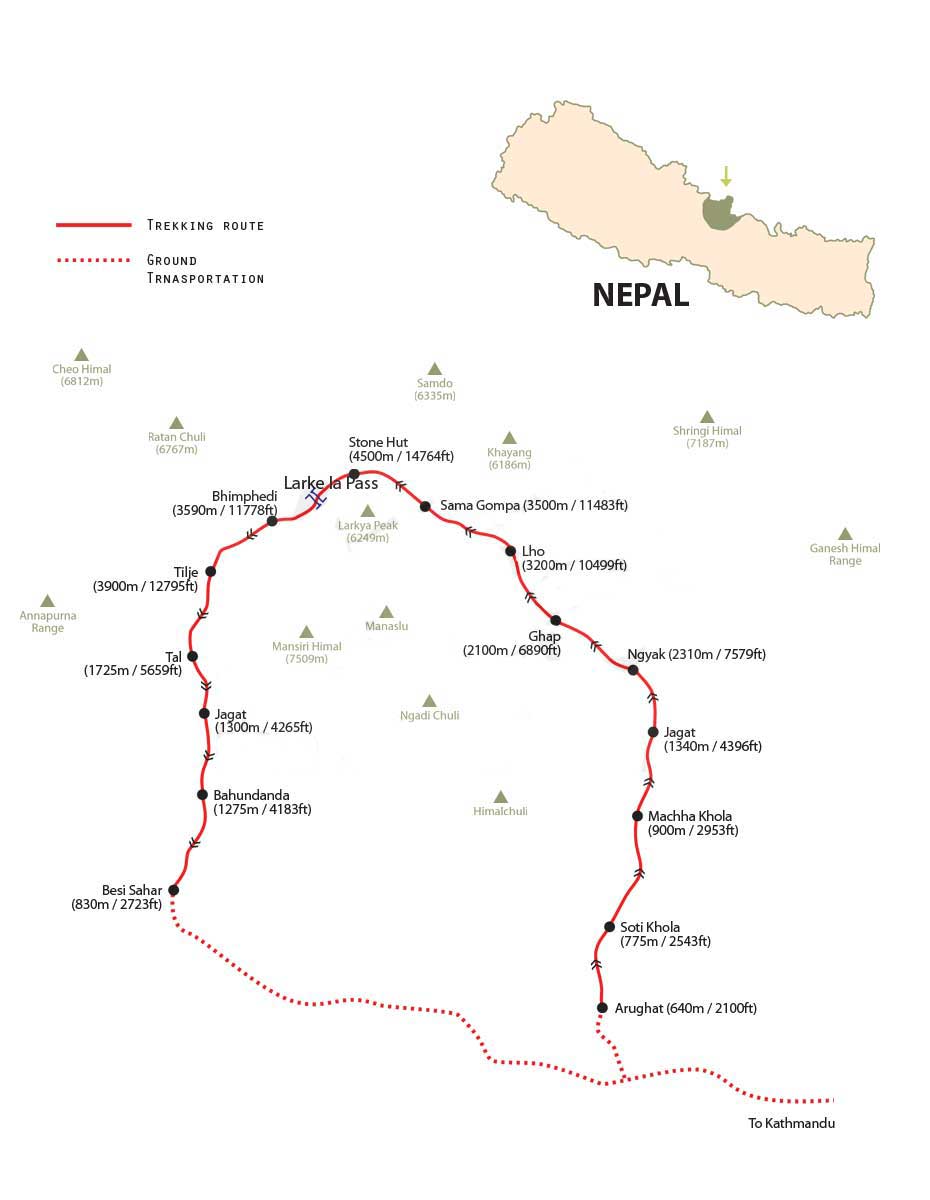
“ Join Upcoming Manaslu Trek starting from 19-10-2026 and 30-10-2026
Note: The above information is a guide and standard template of what we provide. Our trip can be customized at your request to accommodate your specific requirements.”
| Trip Facts | |
| Destination: | Manaslu Region, Nepal |
| Trip Grade: | Moderate to Strenuous |
| Max Altitude: | 4,4610 m ( Manaslu Trek ) |
| Best Season: | Mar–May, Sep–Nov |
| Group Size: | 2–12 |
| Start/End: | Kathmandu |
| Accommodation: | Lodge, Camping (Any One) |
Trek Further. Trek Higher. Join the Journey for 2025-2026.
Challenge the Himalaya. Expedition Bookings Open for 2025–2026.
Ready for the Summit? Join Peak Climbing Season 2025–2026.
Introducing Nepal’s Newest Adventure: Everest Base Camp Drive Trek
What Our Client Says ?
Eric Larsen – Everest Expedition Summit 2010 Autumn
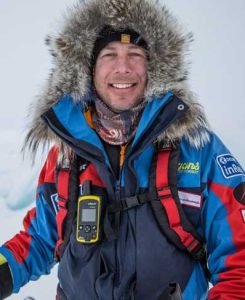
In autumn 2010, I joined the Everest Expedition organized by Himalayan Trail Blazer. Expeditions to Everest during the autumn season are rare, yet the team executed everything with outstanding professionalism, safety, and care. From the meticulous planning to the on-ground support, their expertise was evident at every step. I felt fully supported throughout the journey, and the experience remains one of the most memorable adventures of my life. I would highly recommend Himalayan Trail Blazer to anyone seeking a genuine and well-organized Himalayan expedition.”
Ryan Waters – Dhaulagiri Expedition 2010

Partnering with Himalayan Trail Blazer for the Dhaulagiri Expedition was an outstanding experience. Their logistical support, attention to detail, and deep knowledge of the Himalayan region made all the difference in ensuring the team’s safety and success. From the planning stages in Kathmandu to the final summit push, everything was handled with professionalism and genuine care. I’ve led expeditions across the world, and I can confidently say that Himalayan Trail Blazer sets a new standard in high-altitude guiding and support in Nepal.
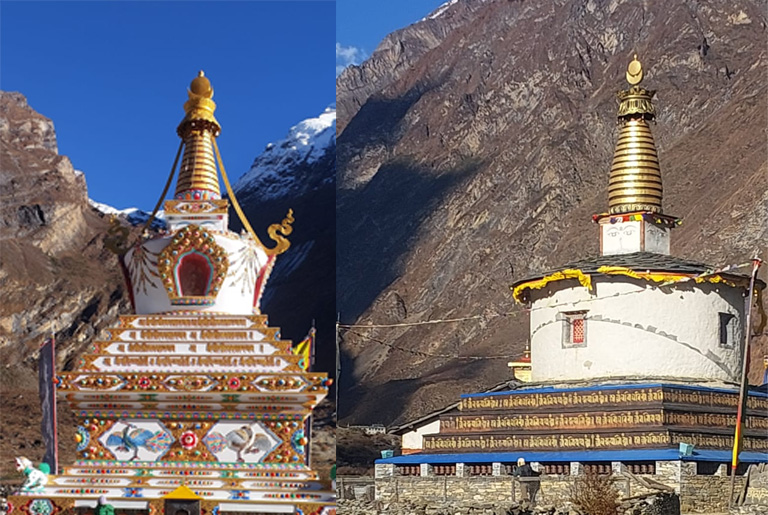
Tsum Valley Trek
Tsum Valley Manaslu Trek Trip Overview Itenary Detail Cost Include / Exclude FAQ Map The Tsum Valley Manaslu Trek is...
Read More
Lower Khumbu (Pikey Trek)
Lower Khumbu (Pikey Trek) Trip Overview Itenary Detail Cost Include / Exclude FAQ Map Following the footsteps of Hillary and...
Read More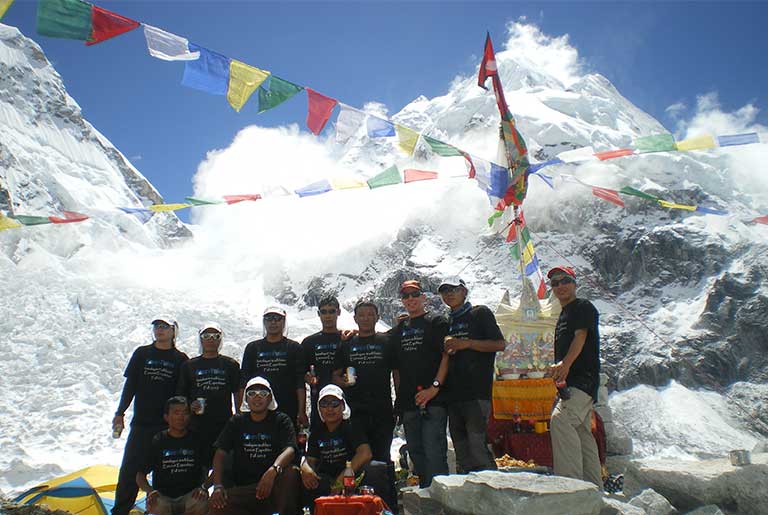
Everest Base Camp Drive Trek
Everest Base Camp Drive Optional Trip Overview Itenary Detail Cost Include / Exclude FAQ Map Following the footsteps of Hillary...
Read More
Manaslu Trek
Manaslu Trek Trip Overview Itenary Detail Cost Include / Exclude FAQ Map Trekking around Manaslu offers a unique opportunity to...
Read More
Kanchanjunga Base Camp Trek
Kanchanjunga Base Camp Trek Trip Overview Itenary Detail Cost Include / Exclude FAQ Map Kang-chen-zod-nga”, means “Five Great Treasuries of...
Read More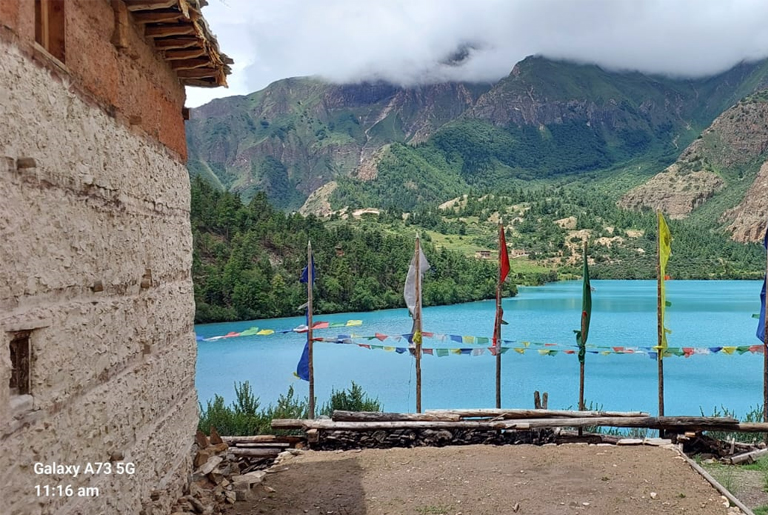
Lower Dolpo Trek
Lower Dolpo Trek Trip Overview Itenary Detail Cost Include / Exclude FAQ Map Make a rendezvous with the remote Himalaya...
Read More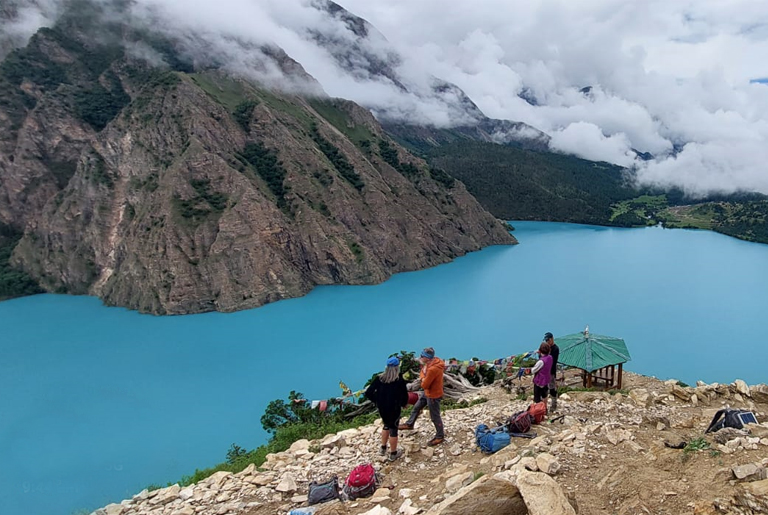
Upper Dolpo Trek
Upper Dolpo Trek Trip Overview Itenary Detail Cost Include / Exclude FAQ Map Dolpo, a land beyond the Himalayas, conjures...
Read More
Dhaulagiri Round Trek
Dhaulagiri Round Trek Trip Overview Itenary Detail Cost Include / Exclude FAQ Map Dhaulagiri 8,167m – the 7th highest mountain...
Read More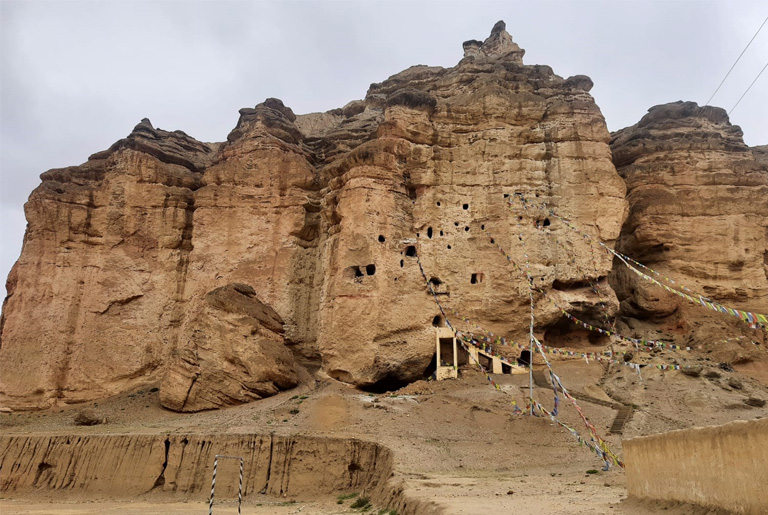
Upper Mustang Trek
Upper Mustang Trek Trip Overview Itenary Detail Cost Include / Exclude FAQ Map Trekking into Upper Mustang is a rare...
Read More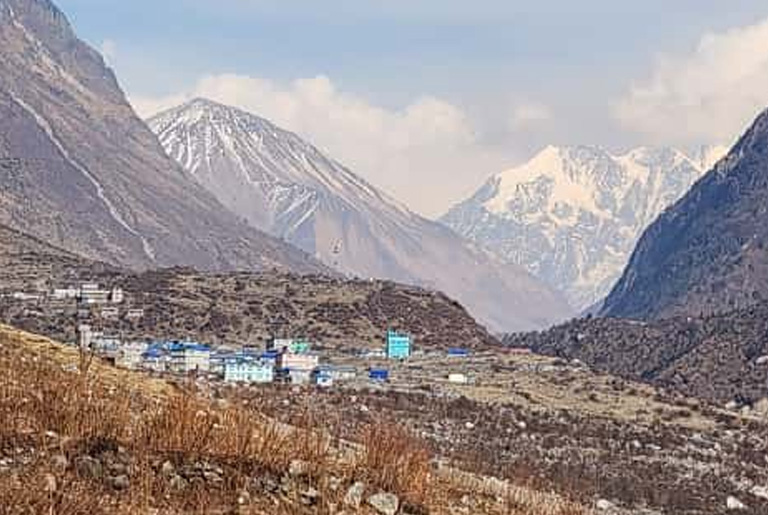
Lantang Valley Trek
Lantang Valley Trek Trip Overview Itenary Detail Cost Include / Exclude FAQ Map A trek to the Langtang valley has...
Read More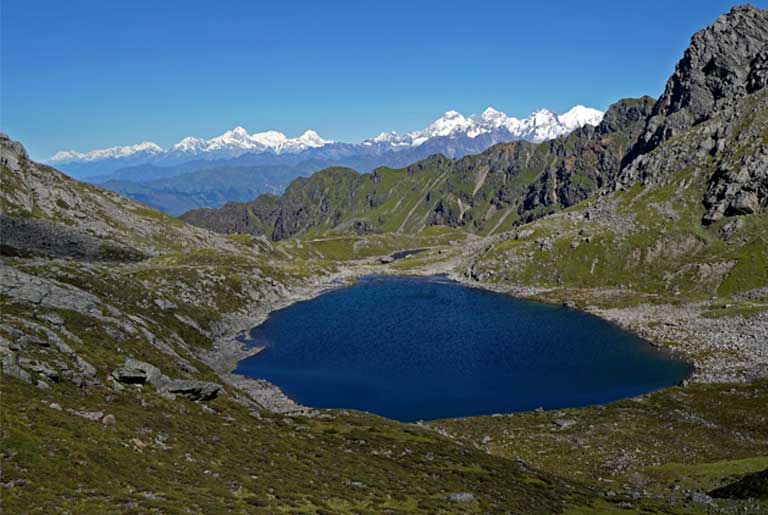
Langtang Gosaikunda Helambu Trek
Langtang Gosaikunda Helambu Trek Trip Overview Itenary Detail Cost Include / Exclude FAQ Map This classical trek combines three major...
Read More
Poon Hill Trek
Poon Hill Trek Trip Overview Itenary Detail Cost Include / Exclude FAQ Map The Annapurna Himalayan (Ghorepani and Poon Hill)...
Read More
Naar Phu Trek
Khangla & Thorang passes trek Trip Overview Itenary Detail Cost Include / Exclude FAQ Map Nar Phu, located in the...
Read More
Jomsom – Muktinath Trek
Joomsom - Muktinath Trek Trip Overview Itenary Detail Cost Include / Exclude FAQ Map The Jomsom and Muktinath trek is...
Read More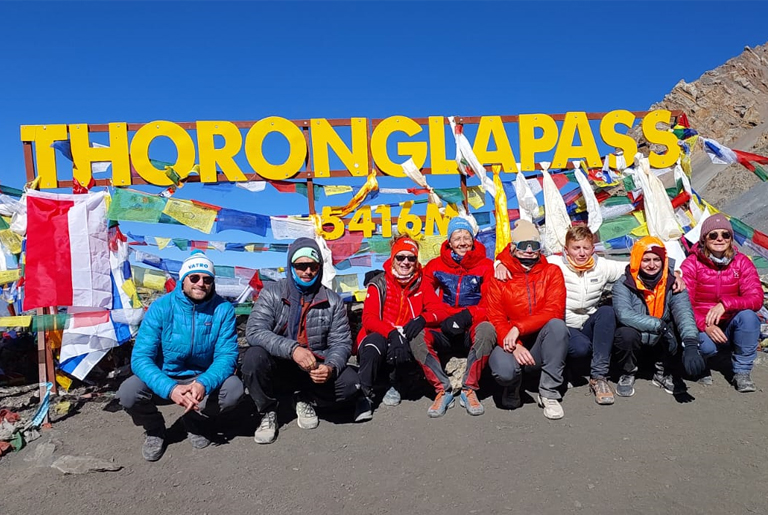
Annapurna Circuit Trek
Annapurna Circuit Trek Trip Overview Itenary Detail Cost Include / Exclude FAQ Map Since it opened to foreign trekkers in...
Read More
Annapurna Base Camp Trek
Annapurna base camp trek Trip Overview Itenary Detail Cost Include / Exclude FAQ Map Annapurna Base Camp Trek combines some...
Read More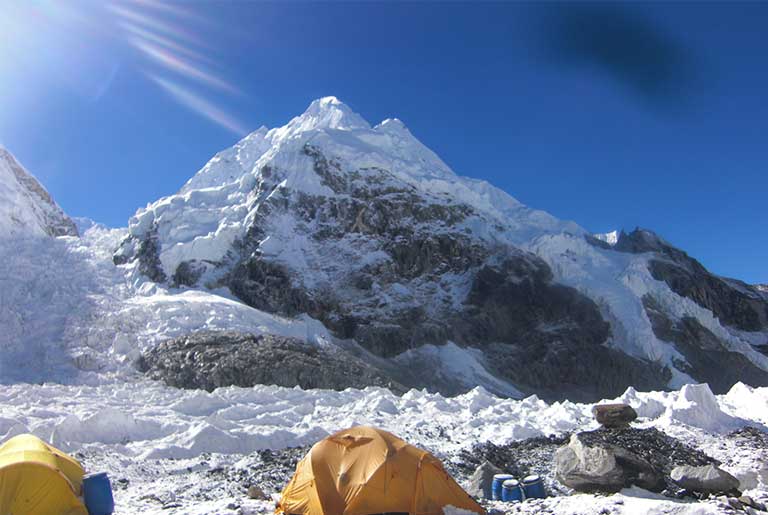
Classic Everest Trek
Classic Everest Trek Trip Overview Itenary Detail Cost Include / Exclude FAQ Map Classic Everest Trek (Jiri to Everest Base...
Read More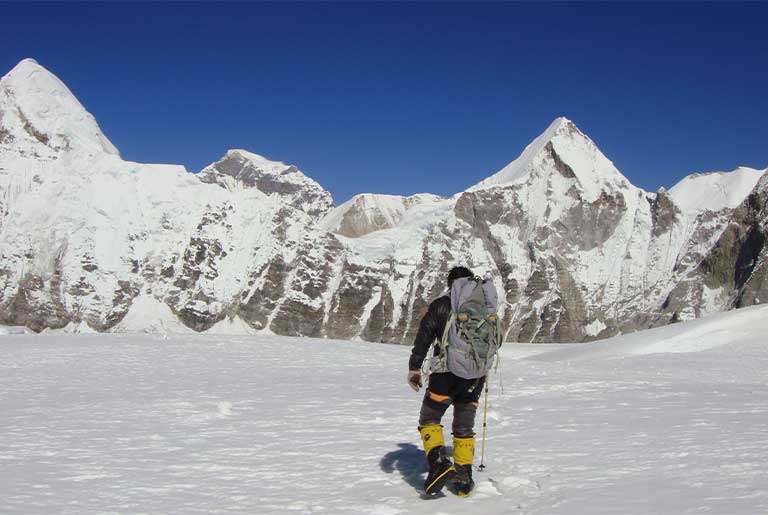
Renjo Pass Trek
Khumbu Three Passes Trek Trip Overview Itenary Detail Cost Include / Exclude FAQ Map Renjo-La pek is one of the...
Read More
Chola Pass Trek
Gokyo Chola Pass Everest Base Camp Trek Trip Overview Itenary Detail Cost Include / Exclude FAQ Map Chola Pass Trek...
Read More
Gokyo Trek
Gokyo Trek Trip Overview Itenary Detail Cost Include / Exclude FAQ Map Trekking around Gokyo valley is considered a traditional...
Read More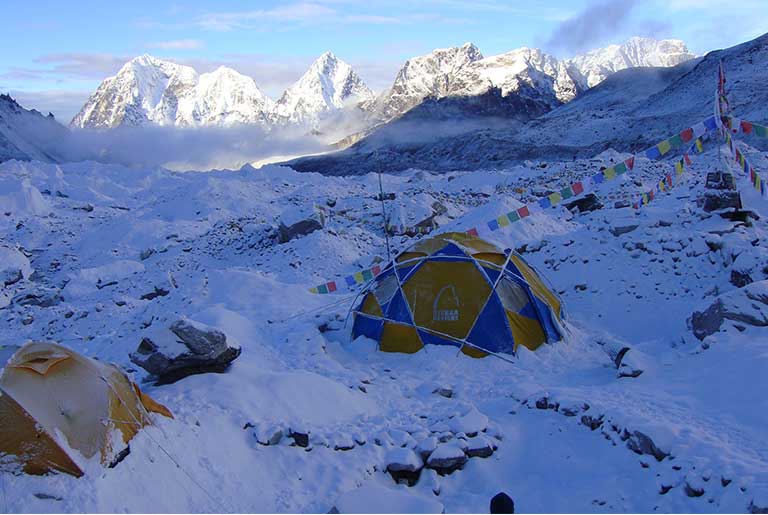
Everest Panorama Trek
Everest Panaroma Trek Trip Overview Itenary Detail Cost Include / Exclude FAQ Map This easy trek in the foothills of...
Read More
Everest Base Camp Trek
Everest Base Camp Trek Trip Overview Itenary Detail Cost Include / Exclude FAQ Map Following the footsteps of Hillary and...
Read More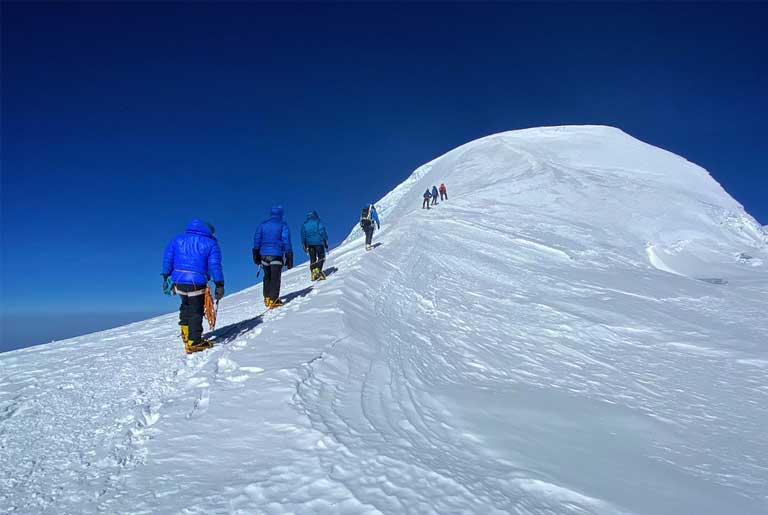
Mera Peak
Mera Peak Trip Overview Itenary Detail Cost Include / Exclude FAQ Map Mera Peak is the highest trekking peak in
Read More
Tsum Valley Trek
Tsum Valley Manaslu Trek Trip Overview Itenary Detail Cost Include / Exclude FAQ Map The Tsum Valley Manaslu Trek is
Read More

Everest Base Camp Drive Trek
Everest Base Camp Drive Optional Trip Overview Itenary Detail Cost Include / Exclude FAQ Map Following the footsteps of Hillary
Read More

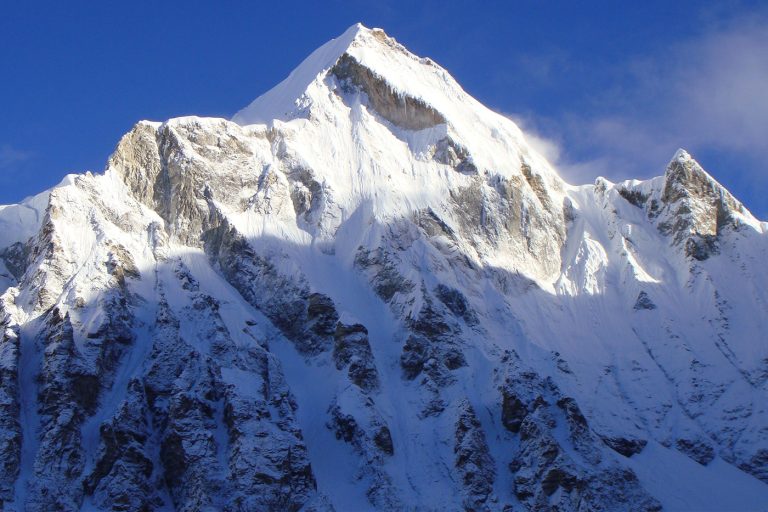
Everest Expedition 2015 Spring
Everest Expedition 2015 Spring Descriptions Himalayan Trail Blazer (HTB) has long been dedicated to organizing world-class climbing expeditions in the
Read More
Manaslu Expeditino, 2014, October
Manaslu Expedition, 2014, October Descriptions Himalayan Trail Blazer has long been recognized for its expertise in leading climbers through the
Read More
Manaslu Expeditino, 2013, October
Manaslu Expedition, 2013, October Descriptions Himalayan Trail Blazer Trekking & Expedition proudly announced the successful conclusion of its Manaslu Expedition
Read More
Manaslu Expedition, 2012, October
Manaslu Expedition, 2012, October Descriptions Manaslu, towering at 8,163 meters, is the eighth-highest mountain in the world. Nestled in the
Read More
Dhaulagiri Expedition 2012, March till
Dhaulagiri Expedition 2012, March till May - Organized by Himalayan Trail Blazer Descriptions In the spring of 2012, Himalayan Trail
Read More
Manaslu Expedition, 2011, October
Manaslu Expedition, 2011, October Descriptions In October 2011, Himalayan Trail Blazer organized a remarkable expedition to Manaslu, led by veteran
Read More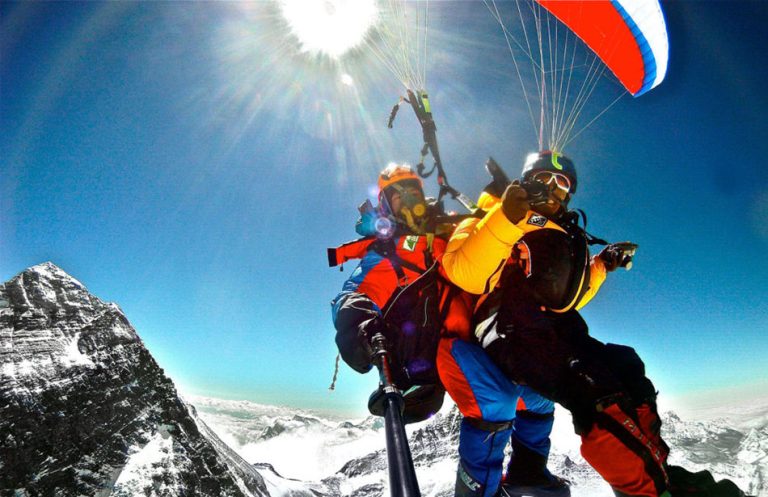
Summit to Sea, 2011 Spring
Summit to Sea, 2011 Spring https://youtu.be/pZ46cuM62ZE?si=oxNaAtznxP38eIK6 Descriptions On June 27, 2011, with the support of Himalayan Trail Blazer, adventurers Mr.
Read More
Everest Expedition via South –
Everest Expedition via South - 2010, October (SAVE THE POLES) -- Eric Larsen Descriptions In Support with Himalayan Trail Blazer,
Read More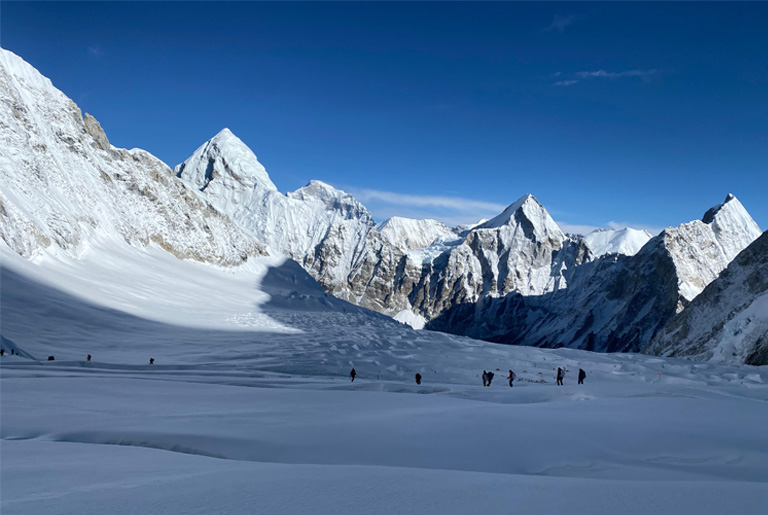
Mt. Lhotse Expedition
Mt. Lhotse Expedition (8516m) Trip Overview Itenary Detail Cost Include / Exclude FAQ Map “Lhotse” which means south peaks is
Read More
Tharpa Chuli Peak
Tharpa Chuli Peak Trip Overview Itenary Detail Cost Include / Exclude FAQ Map Tharphu Chuli (locally known as), Tent Peak
Read More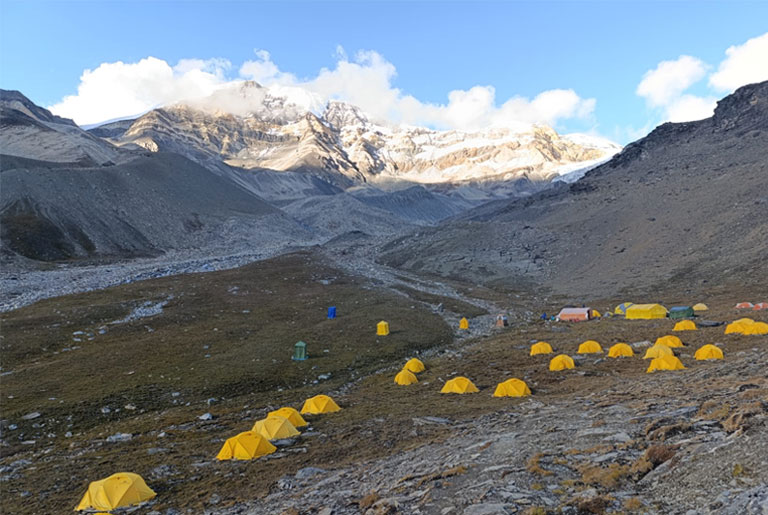
Chulu Far-East Peak
Chulu East Peak Trip Overview Itenary Detail Cost Include / Exclude FAQ Map These peaks are part of the Manang
Read More
Pisang Peak
Pissang Peak Trip Overview Itenary Detail Cost Include / Exclude FAQ Map Pisang Peak stands at elevation of 6091 meters
Read More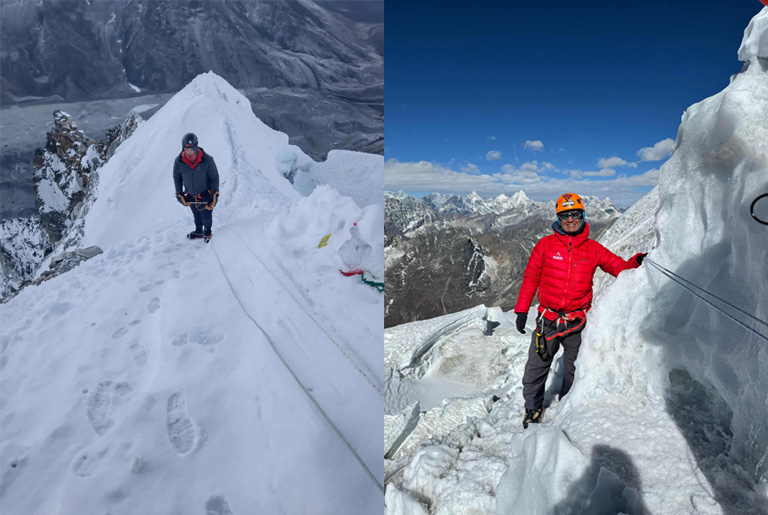
Island Peak
Island Peak Trip Overview Itenary Detail Cost Include / Exclude FAQ Map Island Peak is 6187 meters high and one
Read More
Lobuche Peak
Lobuche Peak Trip Overview Itenary Detail Cost Include / Exclude FAQ Map Lobuche Peak 6119m is one of the popular
Read More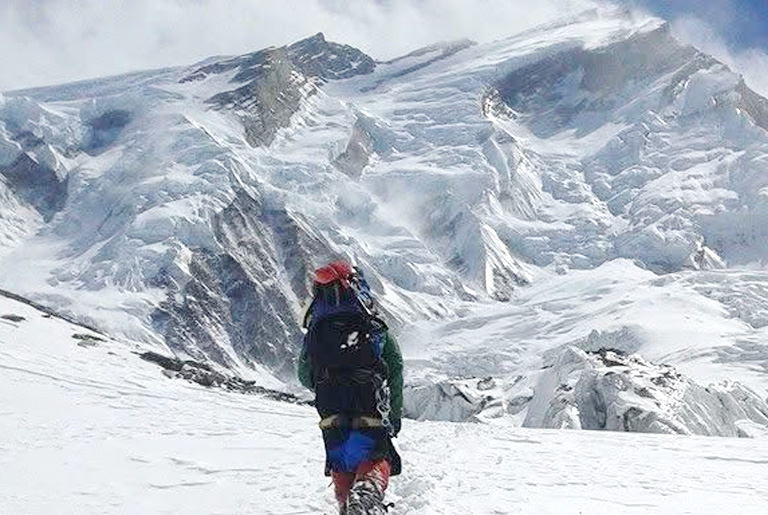
Mt. Annapurna I Expedition
Mt. Annapurna I Expedition (8091m) Trip Overview Itenary Detail Cost Include / Exclude FAQ Map Annapurna is an enormous Himalayan
Read More
Mt. Manaslu Expedition (8163m)
Mt. Manaslu Expedition (8163m) Trip Overview Itenary Detail Cost Include / Exclude FAQ Map Mt. Manaslu (8,163m / 26,781ft) Located
Read More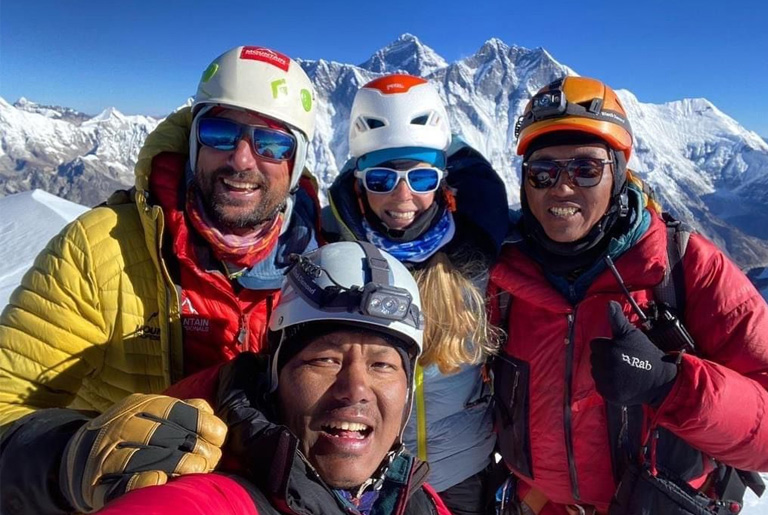
Mt. Amadablam Expedition (6812m)
Mt. Amadablam Expedition (6812m) Trip Overview Itenary Detail Cost Include / Exclude FAQ Map Mt. Ama Dablam expedition has long
Read More
Mt. Everest Expedition (8848m) via
Mt. Everest Expedition (8848m) via South Trip Overview Itenary Detail Cost Include / Exclude FAQ Map The highest summit alone
Read More


Lower Dolpo Trek
Lower Dolpo Trek Trip Overview Itenary Detail Cost Include / Exclude FAQ Map Make a rendezvous with the remote Himalaya
Read More

Dhaulagiri Round Trek
Dhaulagiri Round Trek Trip Overview Itenary Detail Cost Include / Exclude FAQ Map Dhaulagiri 8,167m – the 7th highest mountain
Read More

Lantang Valley Trek
Lantang Valley Trek Trip Overview Itenary Detail Cost Include / Exclude FAQ Map A trek to the Langtang valley has
Read More
Langtang Gosaikunda Helambu Trek
Langtang Gosaikunda Helambu Trek Trip Overview Itenary Detail Cost Include / Exclude FAQ Map This classical trek combines three major
Read More

Naar Phu Trek
Khangla & Thorang passes trek Trip Overview Itenary Detail Cost Include / Exclude FAQ Map Nar Phu, located in the
Read More

Annapurna Circuit Trek
Annapurna Circuit Trek Trip Overview Itenary Detail Cost Include / Exclude FAQ Map Since it opened to foreign trekkers in
Read More

Classic Everest Trek
Classic Everest Trek Trip Overview Itenary Detail Cost Include / Exclude FAQ Map Classic Everest Trek (Jiri to Everest Base
Read More
Renjo Pass Trek
Khumbu Three Passes Trek Trip Overview Itenary Detail Cost Include / Exclude FAQ Map Renjo-La pek is one of the
Read More

Gokyo Trek
Gokyo Trek Trip Overview Itenary Detail Cost Include / Exclude FAQ Map Trekking around Gokyo valley is considered a traditional
Read More
Everest Panorama Trek
Everest Panaroma Trek Trip Overview Itenary Detail Cost Include / Exclude FAQ Map This easy trek in the foothills of
Read More





